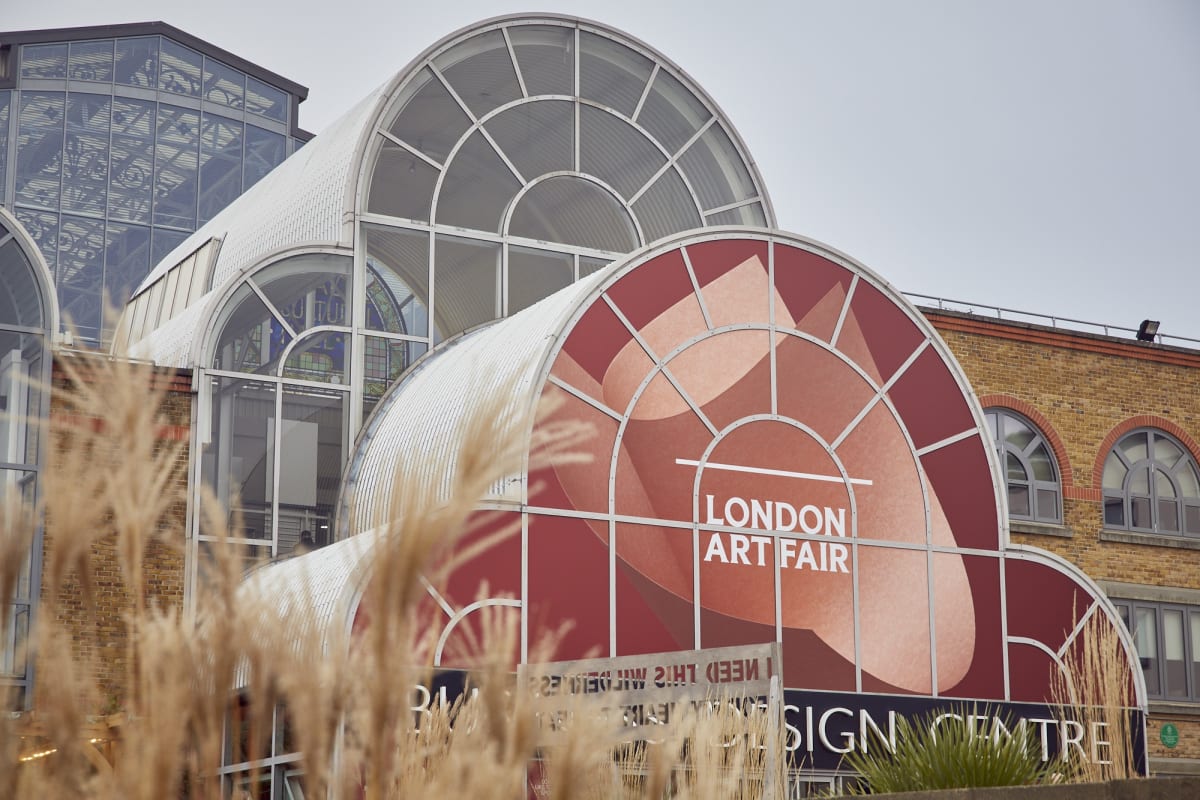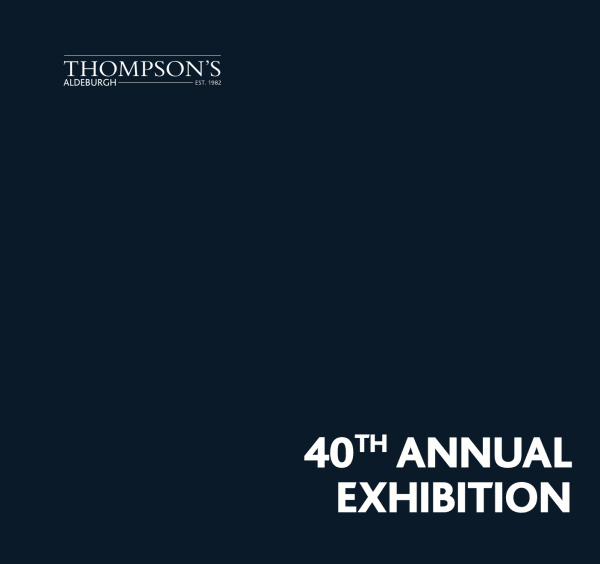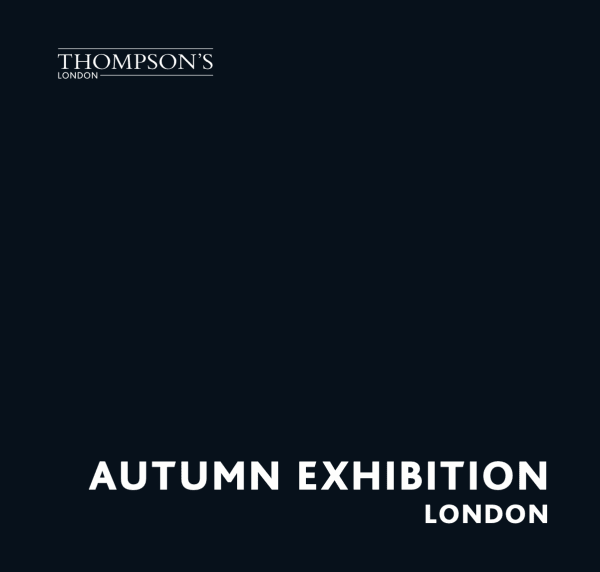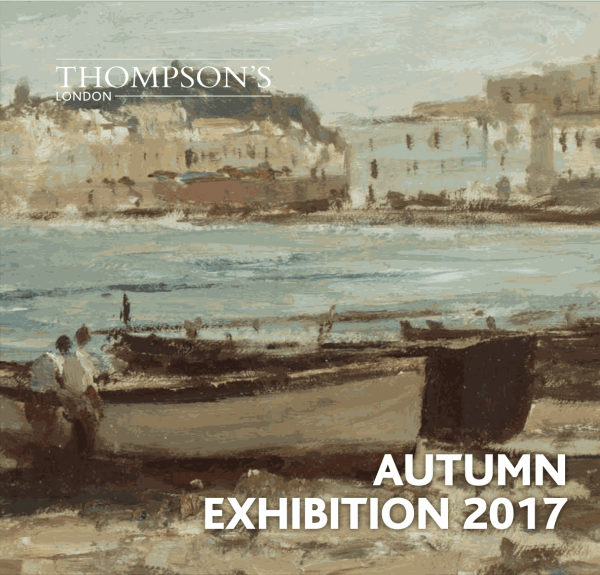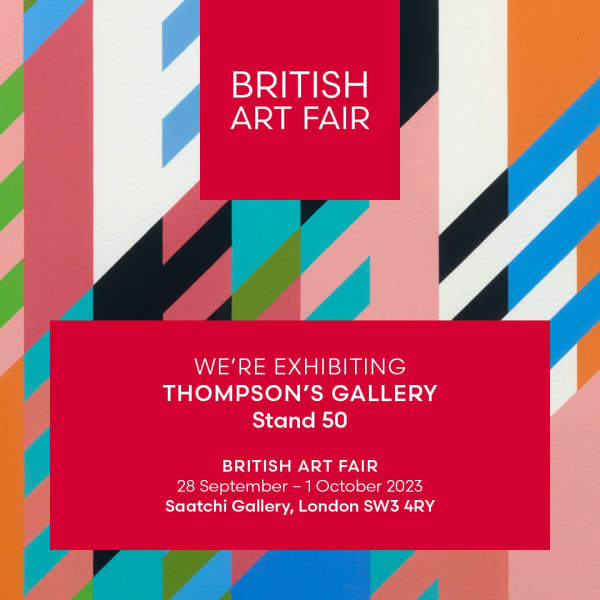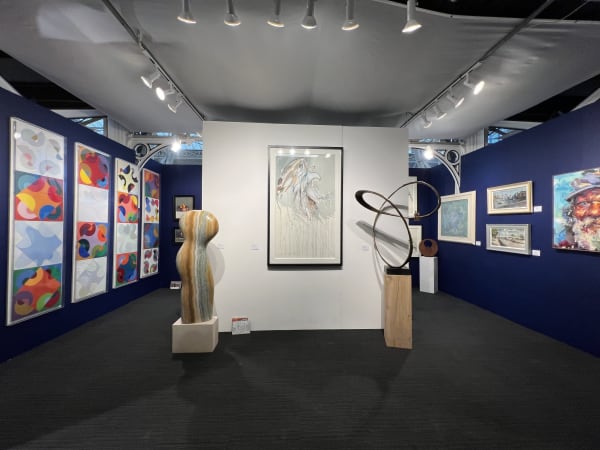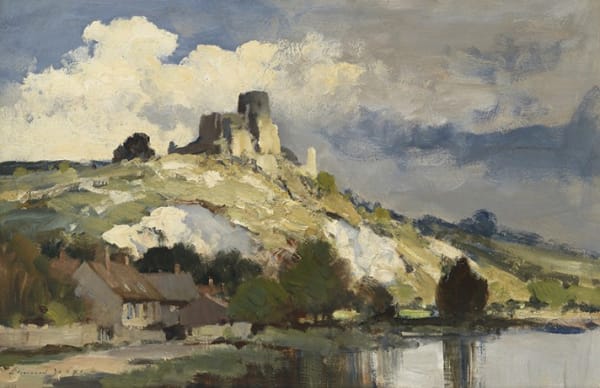Edward Seago RWS RBA British, 1910-1974
Artworks
About
Edward Seago was born in Norwich in 1910, the son of a coal merchant. Aged seven he developed a heart complaint so, whilst bedridden for several years he took to painting scenes from his bedroom window to pass the time. His parents, who were ambitious for him to pursue a career in business, discouraged his obvious burgeoning talent. However, on recovering Seago studied briefly at the Royal Drawing School where he received a prize in recognition of his talent. Whilst there he was taught landscape painting by Bertram Priestman. This was the only official art training he had.
Seago served in the Royal Engineers in World War II. When he was invalided out in 1944 he was invited instead to record the Italian Campaign in paint. In 1953 he was made official artist of the Coronation in public recognition of his remarkable association with the Royal Family. Prince Charles was “totally captivated by the unique way in which he could convey atmosphere on canvas and by the living texture of his paintings”, when he saw Seago’s work at a show at St James’ Palace in 1956.
As a young man, Seago had joined a circus in reaction to his childhood confinement. Travelling provided material for many early paintings, as well as two illustrated books chronicling circus life. Seago continued to travel throughout his life, later often sailing in his own yacht, but he always returned to the “cool greens and greys” of his East Anglian home.
His mature paintings seek to capture atmosphere through his impressionistic style rather than pure topography. His works are open and uncluttered, utilising the simplicity of composition and brushstroke for personal expression and conveying his emotional responses to nature. Seago’s art is very much in the tradition of English landscape paintings, influenced by Alfred Munnings and Laura Knight, but forging a lineage back to Constable and even to Gainsborough. In turn Seago has been very influential upon a later generation of artists, particularly East Anglian painters such as Ian Houston, whom he persuaded to change from bird to landscape paintings.
Edward Seago was one of the most popular and talented English landscape painters of the last century. His annual post-war exhibitions were always a great success and quickly sold out, and his work is still widely sought after.
Exhibitions
-

Annual Exhibition 2024
8 - 30 Jun 2024 AldeburghThe biggest and most varied exhibition in the gallery group. From gallery regulars, our lastest Modern British finds to new contemprary artists showing with us for the first time. Its always an exhibition not to miss!Read more -

40th Annual Exhibition
4 - 26 Jun 2022 AldeburghThe largest of the galleries' exhibitions, the Annual Exhibition features Modern British and contemporary artists, some new, some regulars, some returning faces, and some we could never leave out!Read more
Fairs
Catalogues
News
-

British Art Fair 2023
We're exhibiting! September 15, 2023We're exhibiting at British Art Fair! Top dealers from London and across the UK gather at Saatchi Gallery once a year to present the very...Read more -

London Art Fair 2023
Peter Wileman, Paul Wright, Tony de Wolf, Sir Terry Frost, and more! January 20, 2023Thompson's Galleries are thrilled to return to the London Art Fair (stand G23) this year. In addition to new paintings by Peter Wileman , Paul...Read more -

40th Annual Exhibition
June 10, 2022We are holding our Annual Exhibition which is our largest exhibition of the year and a wonderful display of work by over 70 artists. Every...Read more
Enquire





